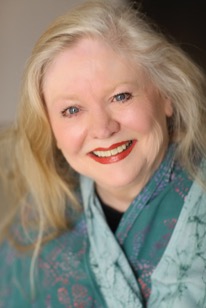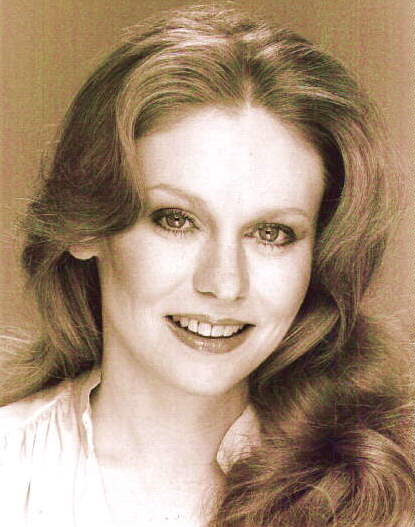Interview: New Orleans Actress Veleka Gray

New Orleans is a deep well of stories and acting talent. Many gifted actors leave New Orleans to find jobs in cities that have larger television, stage or large screen opportunities. But sometimes they return home to New Orleans.-One such person has a name familiar to many New Orleanians—Veleka Gray. The veteran actress is best known for her many roles in soap operas, including Love is a Many-Splendored Thing, As the World Turns, Love of Life, and The Young and the Restless. She also played the role of Victoria Paisley in the long-running television series Somerset. Gray can also be seen in diverse films ranging from Flag of My Father to Texas Chain Saw Massacre 3D.
Early Studies
Gray started her studies for the stage at a small school on Camp Street called Miss Aiken’s. There she studied acting, singing, art and ballet. But her father decided that Veleka needed a broader education, so he had her enroll at Lusher School. The curriculum was indeed broader: “I didn’t know why they were studying history, geography or gym,” she said recently. Eventually Gray graduated from McGehee’s School.
Gray says that growing up, “My family didn’t encourage my acting, but they didn’t discourage it either. Except my mother encouraged me. She was kind of a stage mother.” Gray gave her first audition at the age of five. “We went to WDSU-TV, and that was the channel the Lone Ranger was on. We went in and looked around, and a man asked me, ‘What are you looking for, little girl?’ And I said, ‘The Lone Ranger.’ The man said, ‘He’s not here. He’s in California.’ So I decided to go to California.”
First Big Break
After spending more than two years at Newcomb College, Gray began her travels between the country’s three coasts with a move to Los Angeles with her husband Bobby. “I quit college, because I was so eager to be a professional actress and not a Latin teacher, which was what I was training to be at Newcomb.” At first, she worked for a modeling agency, passing out fliers and grocery samples. After a couple of years of struggling to find an acting agent, she visited the offices of one of the top firms in California: the Kurt Frings Agency.
The young agent with whom she met, John Crosby, looked her over and said that they didn’t normally handle somebody at her early career stage, but that he’d give her a chance. So he sent her to Universal Studios. “The audition was for the bit part of a trainer at a spa who was leading a bunch of overweight women on a hike,” said Gray. But she found a part in the script that interested her, and he memorized the part.

“I had gone to Universal two hours before my appointment specifically to read the script since I didn’t look anything like a muscular trainer and knew I wouldn’t be cast. As I read the screenplay, I was so disappointed that almost all the roles were for nudity, which I couldn’t do. My grandmothers and mother would have disowned me! But in the very last scene of the movie, Elliott Gould goes into a bar where he sits next to a character called The Stew. So I memorized that entire scene. Then when I went in to meet Mel Stuart, the director, as it happened Robert Kaufman, the screenwriter, was also in there, and I just kept thinking ‘The Stew! The Stew!’ And Kaufman suggested I read for it!!”
To her surprise, they gave it to her. Crosby was floored. He had sent her for a one-liner and she had gotten an actual role. Gray says that thereafter, she got every role for which she auditioned.
Teaches Skills at San Quentin
Many years later, after leaving acting to become an acting coach, Gray moved to the San Francisco area. One day, she was driving to Marin County and saw a sign for San Quentin Prison. She instantly felt compelled to call and volunteer for their prisoner educational programs.
An administrator recognized Gray from her performance on As The World Turns, and connected her with the prison’s re-entry program. Gray’s idea was to give presentations to inmates on how to present themselves in public for job interviews and other goals of social interaction. The prison agreed, and assigned a cameraman so that Gray could use the films as feedback for her inmate students. After the first session, the cameraman, Joe, thanked her for the opportunity she provided. It turned out that he was a prisoner on death row and they did not normally let him out.
One of her students at San Quentin was a fellow who called himself Cowboy. Some of the prisoners had been incarcerated for so long that they had lost many social skills, so one of Gray’s exercises was to have each prisoner walk up to her and shake hands. But in this prison environment, the practice was to sidle up to another person in a sort of side-ways crab walk, so that one’s vulnerable stomach is not exposed to a possible attack. Gray verbally corrected Cowboy’s ingrained habit a couple of times, but he still did not grasp the concept. So she placed her hands on his hips and turned him to face her. Upon the touch, Cowboy fell to the ground. “He said he fell because he had not been touched by a woman in ten years.” Thereafter, Gray made sure to pat each inmate on the shoulder or back to show that she accepted them as fellow human beings.
Some years later, Gray moved back home to New Orleans, where she now acts, teaches acting and voice, does commercials and voice-overs, and writes screen plays. You can learn more about Veleka’s fascinating career at her website: www.veleka.com.
